Inside: Teach your kids how to help families that are food insecure with these simple tricks you can do in under five minutes.
Disclaimer: This is a sponsored post by Give Better and The Give Better Fund, but the opinions expressed in this post are based on my personal view.
Mom, I’m hungry.
Each day I lose count how many times I hear my kids complain about being hungry.
And my response is usually, “Go get a snack.”
My fridge and pantry are almost always full, along with a snack basket full of snacks my kids can help themself to as we race to soccer practice, or head for a long car ride, or while they do schoolwork.
There is always enough food in our house.
Some would argue (including my husband and I), there’s too much food in our house. Too many choices. Too many snacks. Too many things that get shoved to the back of the fridge and go rotten before we eat them.
And while my kids don’t always realize it, we are so lucky to be able to say that.
Sure there have been tough months and meals that involved clearing out the pantry because there was “more month and the end of our money.” But my kids never felt the pinch or the stress of the last few days before payday as we got creative with our meals.
My kids have never questioned whether or not they’re going to eat. They know their next meal is around the corner and they’ve got the full snack basket to tide them over until then.
They might complain about “being hungry,” but they’ve never known true hunger.
They’ve never been food insecure or worried about when and how they’ll eat next.
And because our family has been so blessed and we are so lucky to not know real hunger, in our family that full kitchen comes with the responsibility of teaching our kids how lucky they really are and helping others around us who aren’t so lucky.
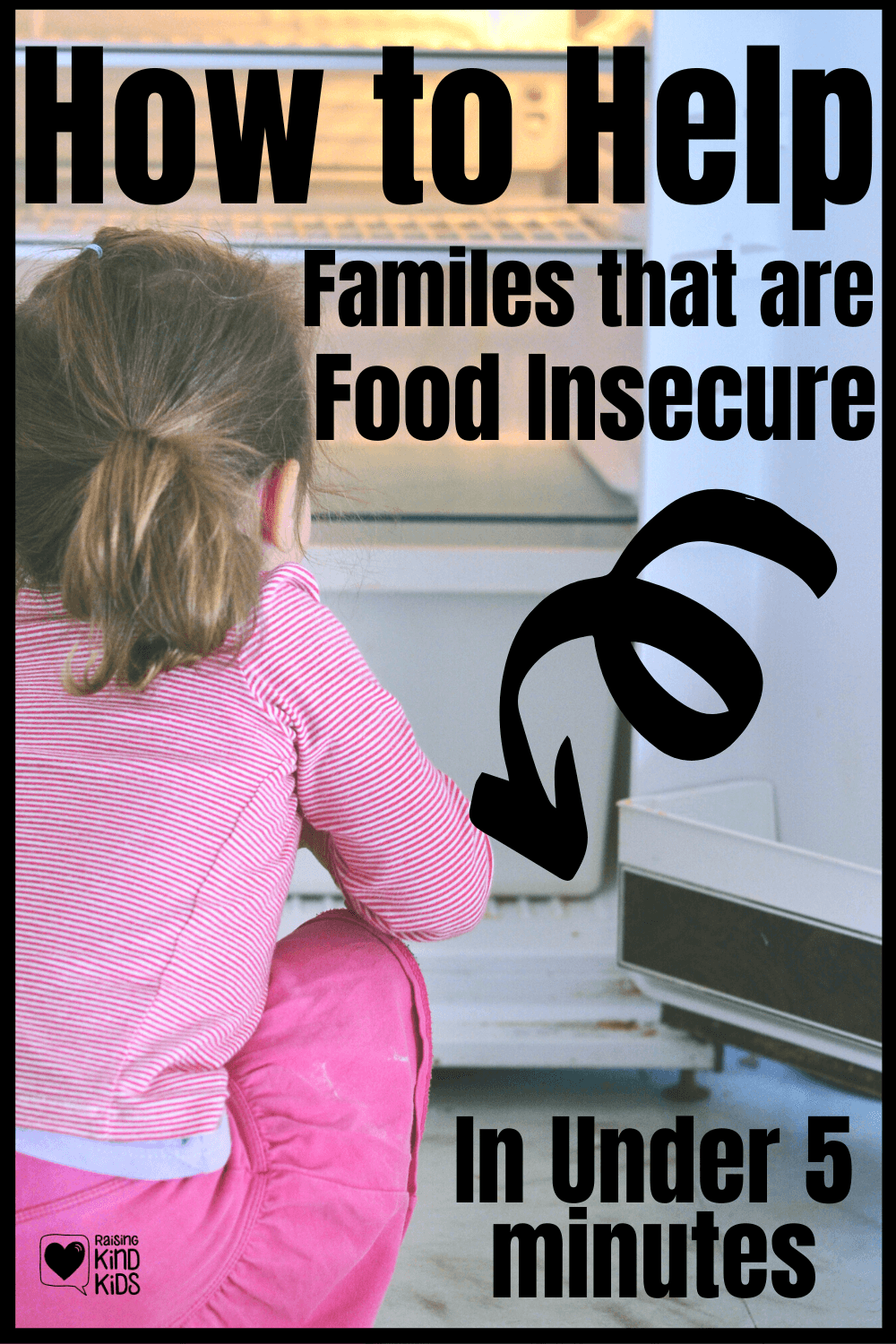
What is food insecurity?
The US Dept of Agriculture defines food insecurity as “limited or uncertain access to adequate food.” These are households where eating has been disrupted or reduced because the family lacks money or resources to get food.
But this concept can be hard to explain to our children who wake up and can choose between frozen waffles or cereal or a bagel and two different kinds of juice and three different kinds of fruit.
My children, who can choose between 3 different jam flavors for their toast, have a hard time understanding and internalizing what food insecurity means for other people.
But I need my kids to know about this since I’m raising kind, empathetic, compassionate kids.
They have to understand it so they are moved to action and want to help those around them.
Related: How to Teach Kids to Be More Compassionate Towards Others
Here’s how we can explain food insecurity to our kids:
Food insecurity is:
- an empty pantry, an empty fridge, and no snack basket to grab food whenever you feel like it,
- having to choose between rent or a mortgage, electricity, or a trip to the grocery store,
- the bare minimum of food at home but not being allowed to eat it because it is being saved for a family meal that needs to be divided out evenly or rationed,
- relying on school breakfast and school lunches as your only guaranteed meal and being hungry on the weekends and summer,
- finding food and saving it until a time when you feel excruciatingly hungry,
- eating food to survive, rather than eating your favorite food, or eating food as a treat, or eating food as a celebration.
This is still a hard concept for kids so we also read books about food insecurity. Here are a few you might like:

Uncle Willie and the Soup Kitchen
The Good Garden: How One Family Went from Hunger to Having Enough
Luckily, most of our kids have never experienced what true hunger feels like.
They may feel put out if we run out of their favorite cereal or their “must have” yogurt flavor, but they’ve never known a time when they had to go to bed hungry and weren’t sure if food would be available in the morning.
But, 1 in 9 Americans intimately knows what hunger feels like. It is estimated that over 37 million Americans are food insecure.
And frankly, it’s completely unacceptable anyone should know hunger.
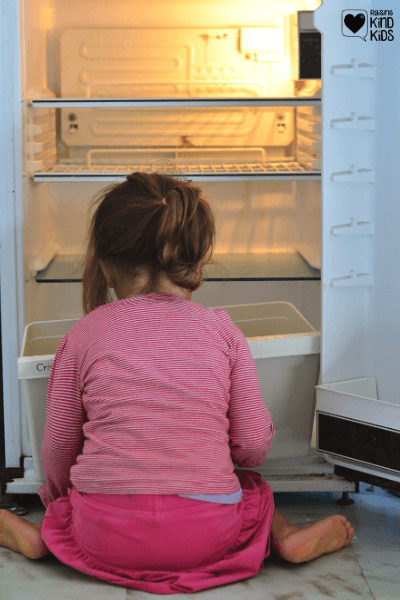
The good news is, there are things we can do about it.
Related: How to Help Kids Learn To Donate Money
How to Help Families that are Food Insecure
There are a few different ways we can help families that are food insecure.
1. Understand It’s Happening Right Next to You
First, we have to be aware that this is not an us vs. them concept. Most people, even if we’re not living paycheck to paycheck anymore, are just a few short months of back luck or a debilitating medical issue or a lost job away from being food insecure.
And so people who are food insecure will most likely not fit the stereotypes we have in our heads about people who are hungry or live in poverty. They are not all homeless, living in shelters, or on the streets. They’re not only people who live in “bad neighborhoods” or single-income homes or children who are orphans.
They’re our community members who’ve hit hard times. They’re our kids’ classmates whose parents both lost their jobs. They’re our elderly neighbors who can’t afford their life-saving prescriptions and food. They’re families whose medical bills have completely wiped out their life savings.
Food insecure people live in your town, whether we know who they are or not.
Being aware that people around us struggle is the first step because, to quote my husband who constantly quotes GI Joe cartoons from his childhood, “knowing is half the battle.”
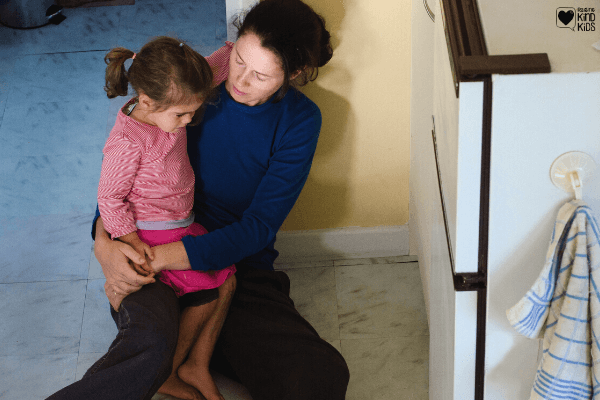
2. Start with Gratitude
Before we help others and teach our children to help others, a great place to start is with gratitude.
Help your kids see how blessed you are as you open your fridge and pantry. Show them that not only do you have bread for toast, you also have strawberry, grape, and raspberry jam to choose from and that is a privilege.
Have your kids thank the person who cooked your meal. And then at your meal, give a short thanks (or prayer) to the farmers who grew it, the farmworkers who picked it, the truckers who transported it, the grocers who stocked it, and the mama or dad who went to the grocery store to shop for it and pay for it.
You can also challenge your kids to write down everything they eat in one day and then in the evening evaluate the list with a grateful heart to show gratitude for having all of the delicious, healthy food available to them.
3. Take Action: Feed Hungry People Now
Most people remember to donate to food banks around Thanksgiving and Christmas. It’s the standard time to give back and be grateful for what you have. My local food bank was stocked with gravy and stuffing and cans of green beans for months.
But do you when most children go hungry? In the summer. With fewer (or no) school programs to feed them, children are home all day and don’t receive the school breakfasts and school lunches so many of them rely on to eat.
So if we want to make a real difference, the time is now, before kids head off to summer break.
How do we get food to the people who need it most?
When I used to grocery shop, I would buy a few extra items to drop off to our local food bank from their wish list.
But after volunteering at a food bank, I learned that my $5 box of granola bars purchased at the grocery store would buy 400 granola bars if instead, I gave the $5 to the food bank. They have incredible buying power and can buy in bulk to really make a difference.
So while I love shopping for food and dropping it off at the food bank, if our real goal is to feed people, the most efficient and effective way is to donate money to non-profits who feed people.
And if you’re busy like me, I often forget to send in my money or drop off money…and then a month or two has gone by and I haven’t helped the way I intended to.
This is one of the reasons I have partnered with Give Better.
Give Better makes it easy to take action (without forgetting) by setting us up to donate monthly to help feed families who need it most with their Project Free Food Scholarships.
Disclaimer: This is a sponsored post by Give Better and The Give Better Fund, but the opinions expressed in this post are based on my personal view. @givebetterprojects #GiveBetter #Ad
Ready to fill pantries and refrigerators and bellies before the summer begins and the needs spike?
Head to Give Better’s website and choose how much to donate. Know that $5/month makes a huge difference. To involve your kids, have them help you fill out the online donation form as you’re talking about how every dollar helps to feed people who are hungry.
Because when we feed our neighbors, we’ll have peace of mind knowing we are part of the solution to ending food insecurity in our nation.
One less child, one less senior will go hungry because of you and your family’s monthly donation.
And if that means I buy one less jar of jam this month for my kids to choose from for their toast, or I purchase one less snack choice for our snack basket, that’s a sacrifice we’re all willing to make.

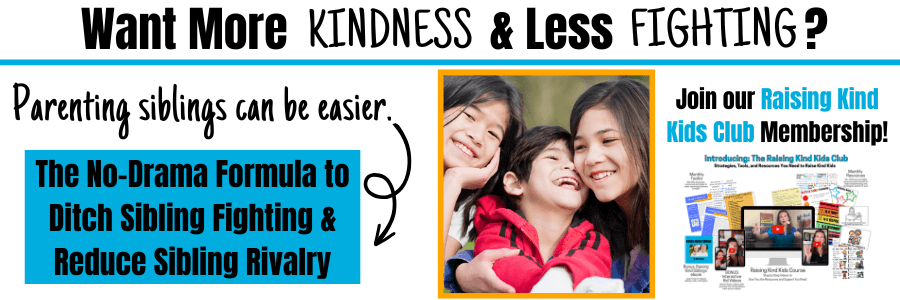
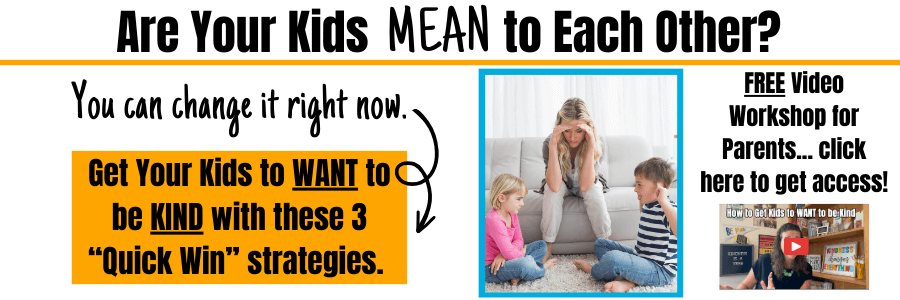





Leave a Reply